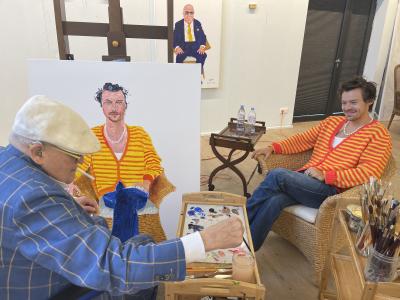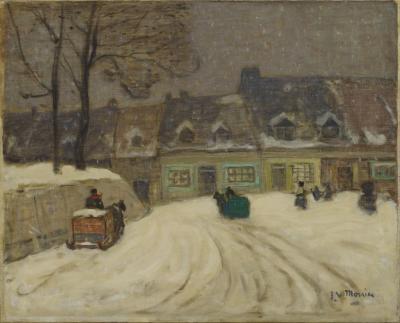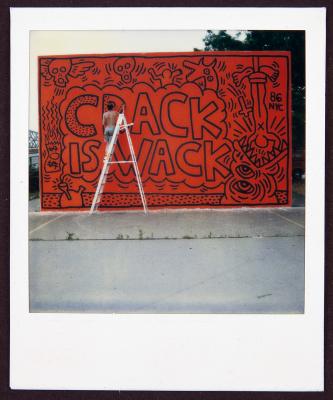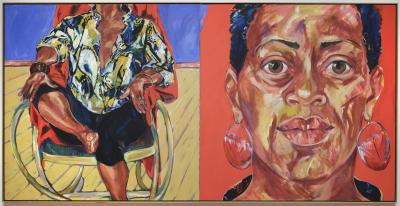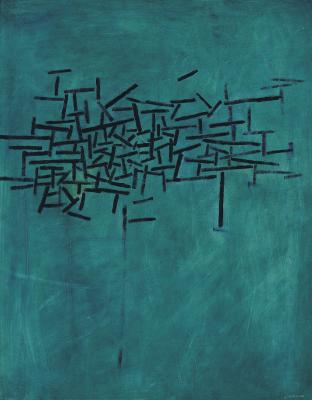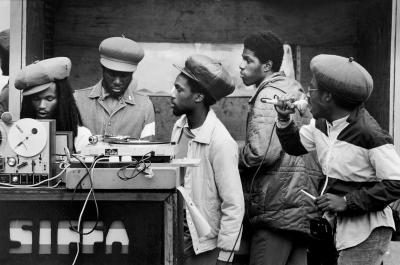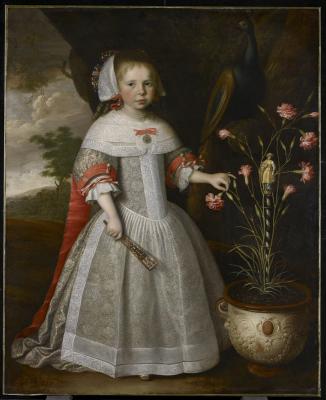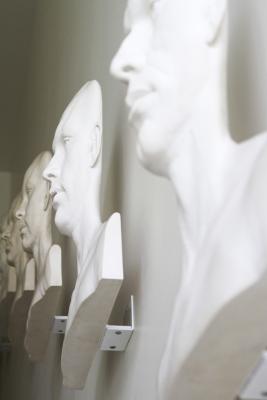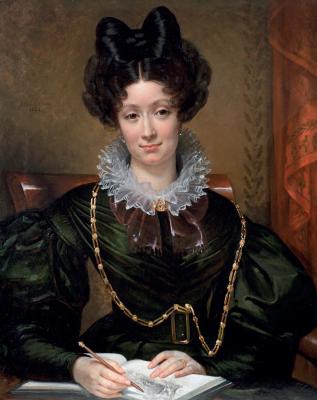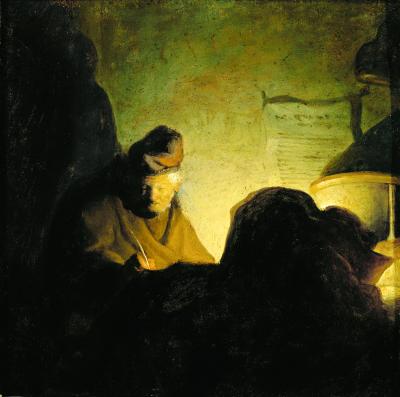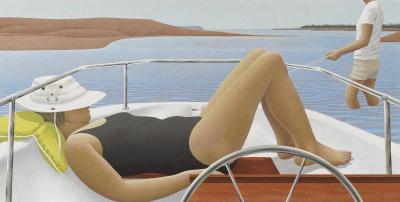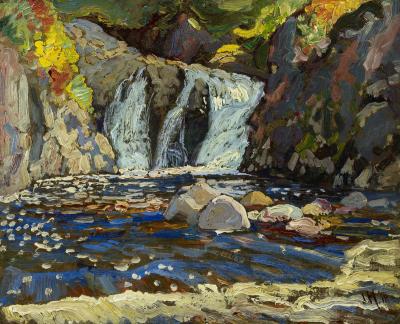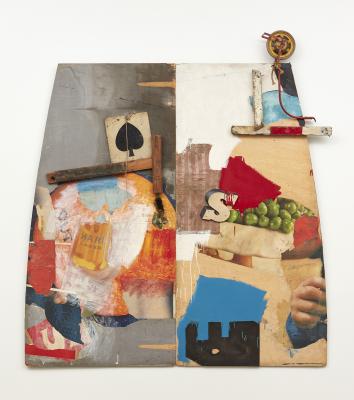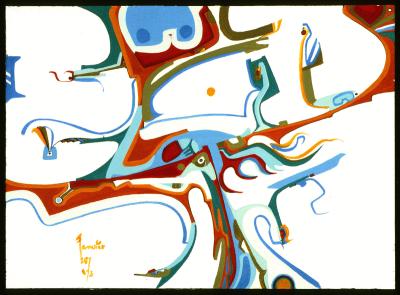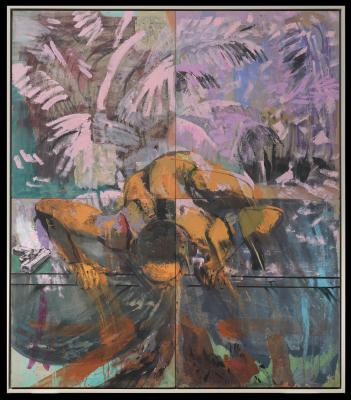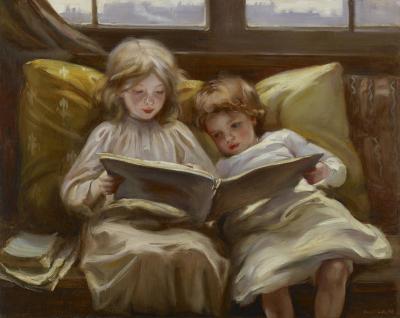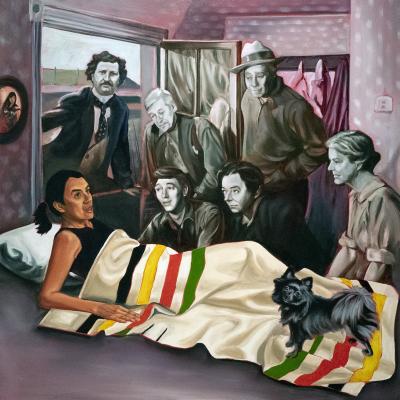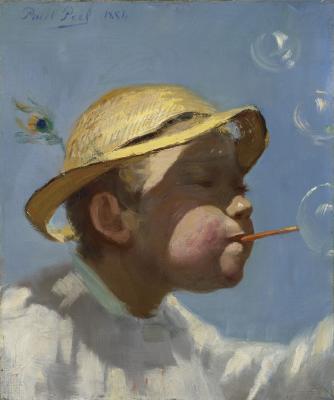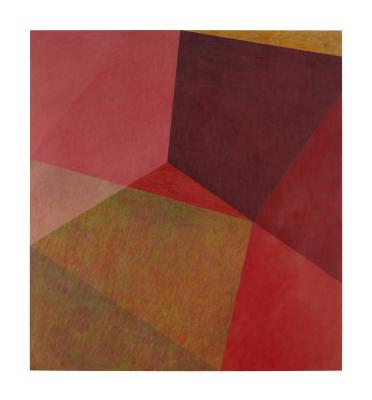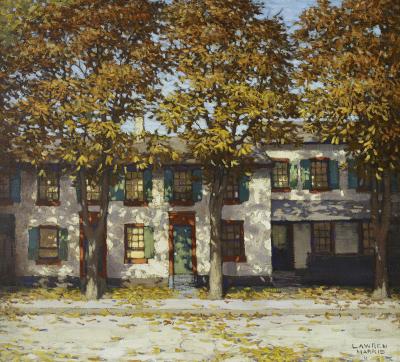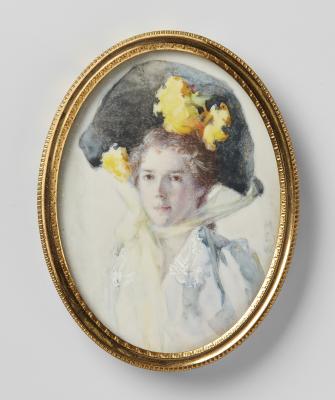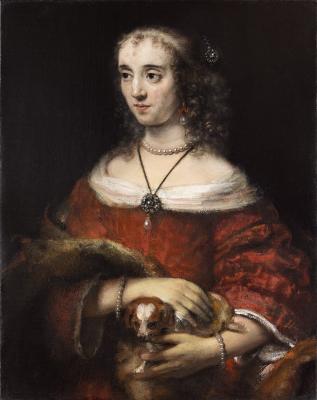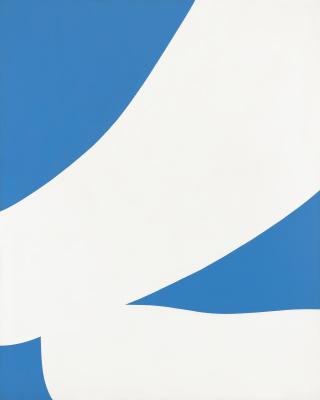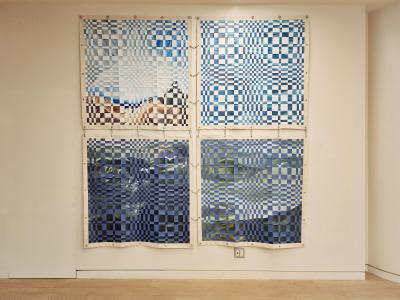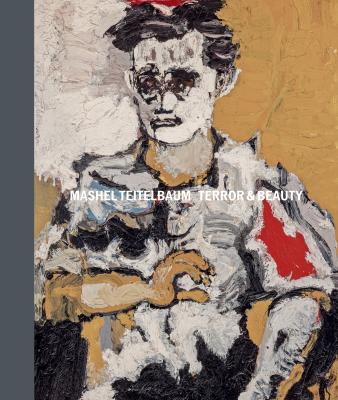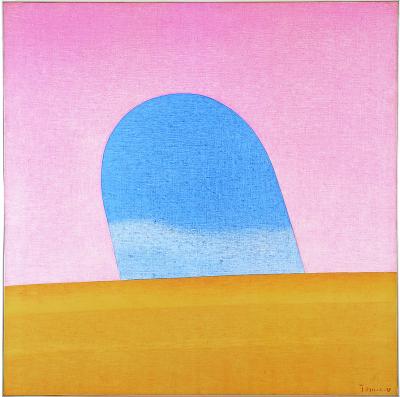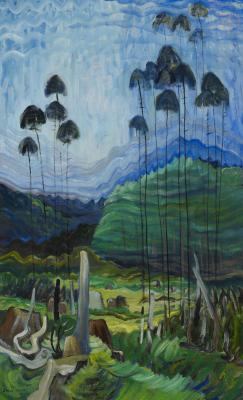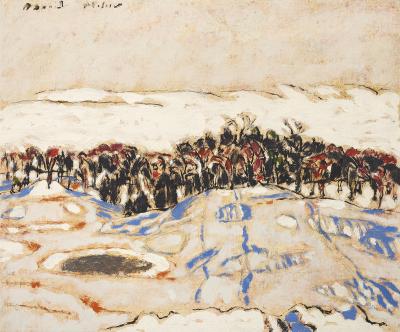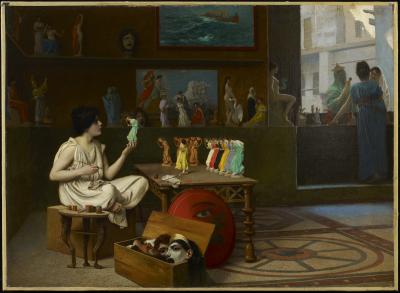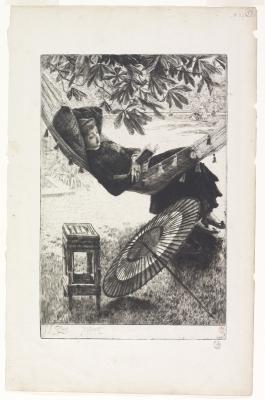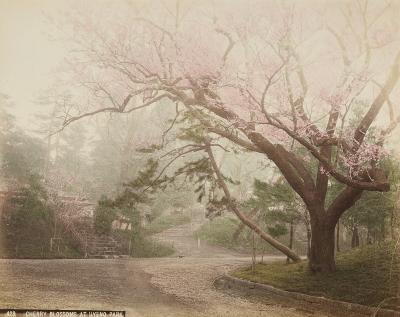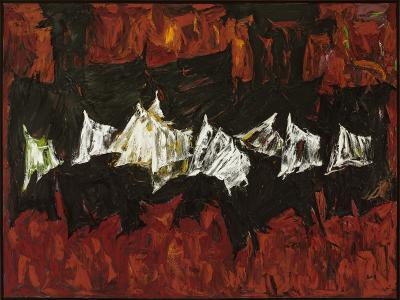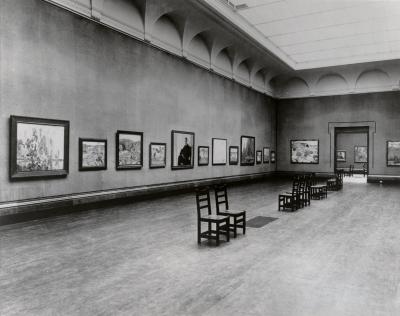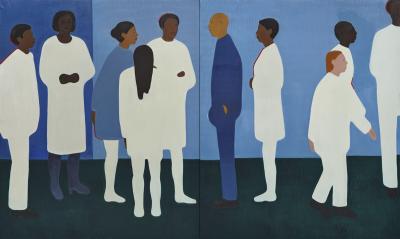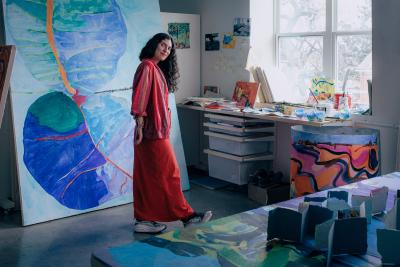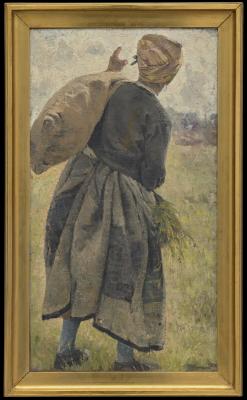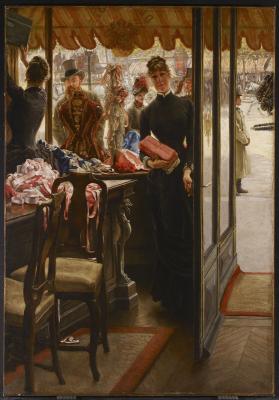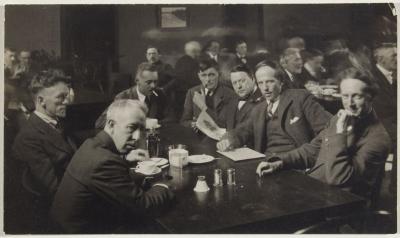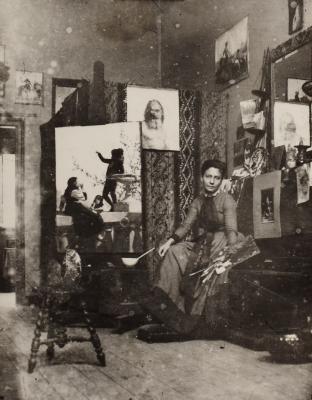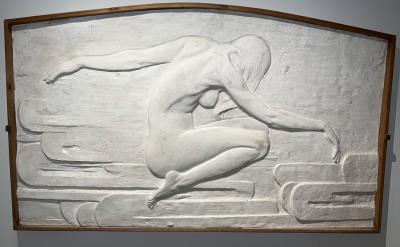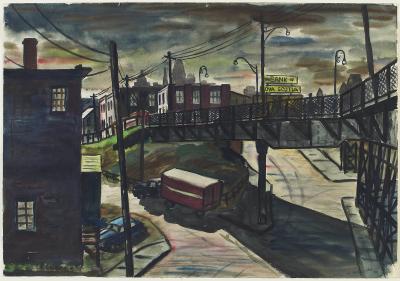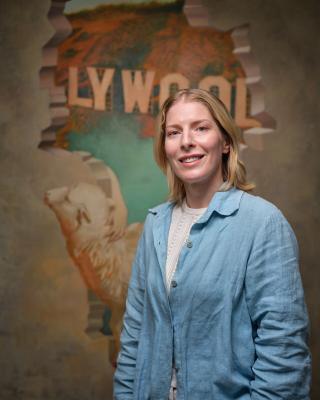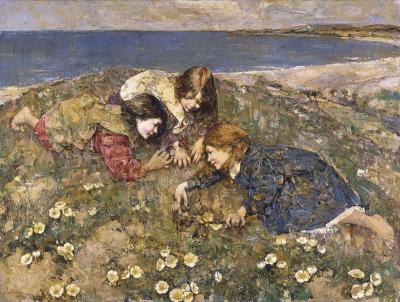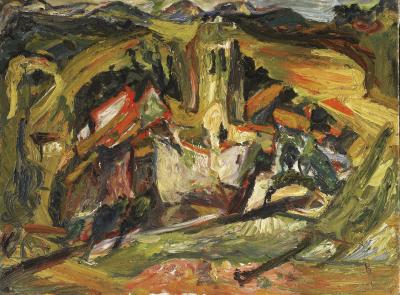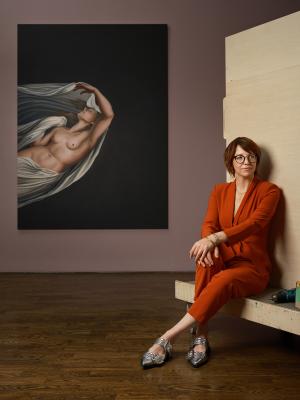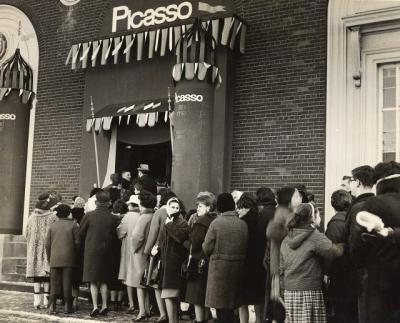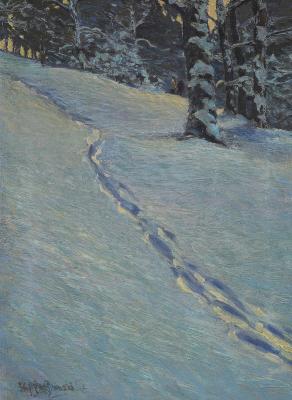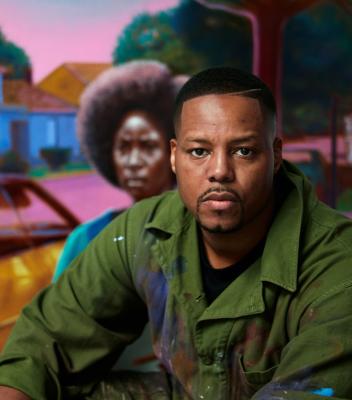Five things you may not know about Keith Haring
Cartoons, graffiti, activism, and Madonna - learn five facts about Haring’s impactful career
![Keith Haring in a Top Hat [Self-Portrait], (1989)](/sites/default/files/styles/max_1300x1300/public/2023-11/KHA-1626_representation_19435_original-Web%20and%20Standard%20PowerPoint.jpg?itok=eGXAk5gN)
Keith Haring, Keith Haring in a Top Hat [Self-Portrait], January 9, 1989. Polaroid. 10.8 x 8.25 cm. Courtesy The Keith Haring Foundation. © Keith Haring Foundation.
Whether you know it or not, you’ve probably seen a Keith Haring artwork somewhere in the world. Maybe you’ve even worn one or two.
Uniqlo, Converse, Pandora, and Lacoste - the list of brand collaborations with the late artist goes on. But who was the man behind this vibrant and lively line work, and what messages were central to his art? Throughout the 1980s, Haring’s work was internationally recognized and featured in numerous solo exhibitions before his passing in 1990. Yet, one of the reasons Haring’s work is so widespread today is because he was an artist dedicated to making art accessible and dissolving the barriers between life and art.
Keith Haring: Art is for Everybody is currently on view at the AGO and features more than 120 artworks, including paintings, sculptures, memorabilia, and even clothing designed by the artist. Starting with works created when he was an art student and ending with works created just months before he passed, the exhibition highlights the range of materials and topics Haring explored during his short, yet impactful career.
From his commitment to public art to the activism fueling his work and his A-list friends, here are five facts you may not know about Keith Haring.
1. Haring was raised by an amateur cartoonist
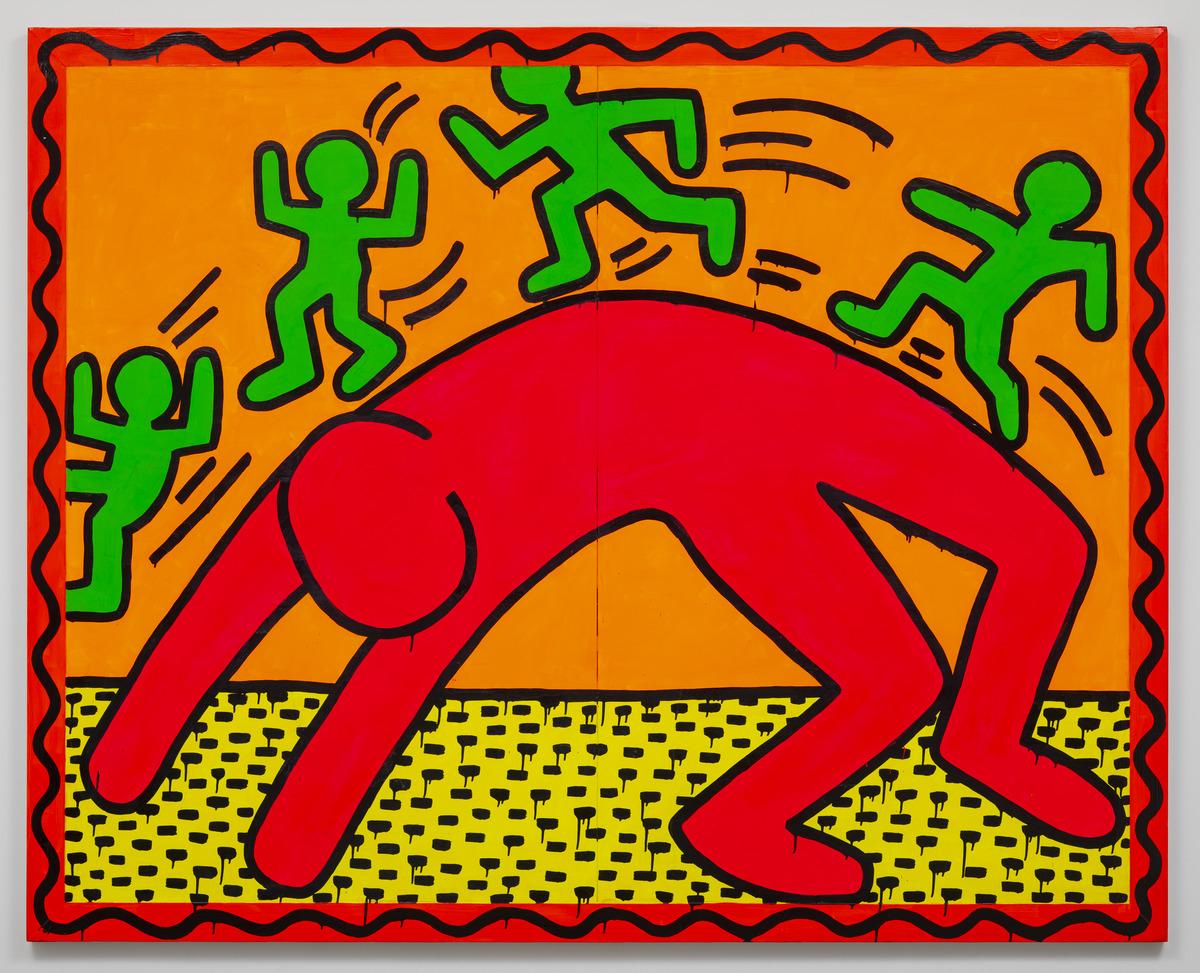
Keith Haring, Untitled, 1982. Enamel and Dayglo on metal, 182.9 × 228.6 × 3.8 cm. Courtesy Gian Bochsler, Switzerland. © Keith Haring Foundation
Born in Kutztown, Pennsylvania, in 1958, Haring and his four siblings were raised by their mother Joan Haring and father Allen Haring, who was an amateur cartoonist and engineer, and recently passed away in July of this year.
From the age of four, Haring would draw with his father, learning from Dr. Seuss and Disney cartoons. However, he saw a difference between being an artist and being a cartoonist. His parents were supportive of his artistic talents and convinced him to attend the Ivy School of Professional Art in Pittsburg so that he could gain a commercial art background. Realizing he did not want to become a graphic designer or illustrator, Haring withdrew and hitch-hiked across America, stopping to look at various art programs in the country.
2. Haring created graffiti in New York City subways
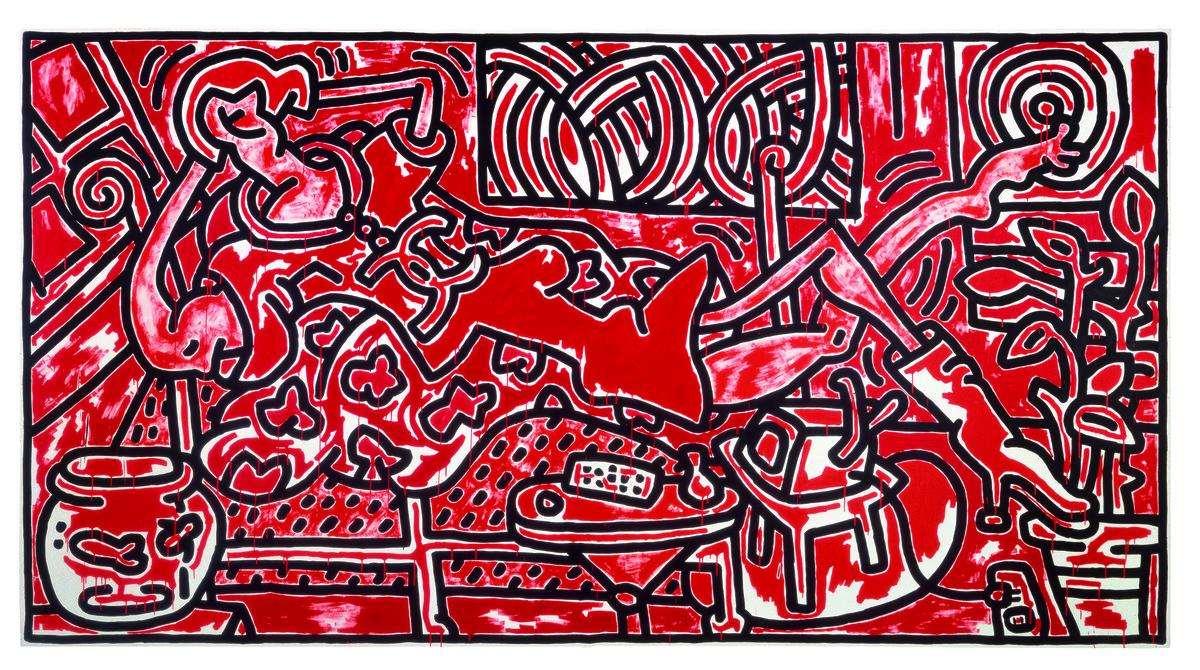
Keith Haring, Red Room, 1988. Acrylic on canvas, 243.8 × 454.7 cm. The Broad Art Foundation. © Keith Haring Foundation.
In 1978, Haring began studying in New York City on a scholarship to the School of Visual Arts (SVA). As he developed his signature style, he became captivated by graffiti in subways. In 1984, he wrote in his book Art in Transit, “I was immediately attracted to the subway graffiti on several levels: the obvious mastery of drawing and color, the scale, the pop imagery, the commitment to drawing worthy of risk and the direct relationship between artist and audience.”
In 1980, Haring began using white chalk to create his graffiti on the black panels placed on vacant advertising spaces in subway platforms. The purpose of these subway drawings was to bring art outside gallery walls and into the public, something Haring remained passionate about throughout his career. Haring included what he saw as universally readable images in these works, even incorporating pre-existing graffiti tags. He saw his subway drawings as performances, and he was met with an array of confrontations while he worked, including curious subway riders and police officers arresting him for vandalism.
The radiant baby was Haring’s graffiti tag across the city, and you can see three of his babies tagged in Drawing on New York Subway Map (1983), as well as various photos of Haring drawing in the subway taken by close friend and photographer Tseng Kwong Chi in Room 1 of the exhibition at the AGO.
Haring went on to create multiple public works over the span of his career, including the 1987 mural We the Youth, which is the only collaborative mural done by the artist that remains intact and on its original site.
3. Haring designed and sold his own merchandise first
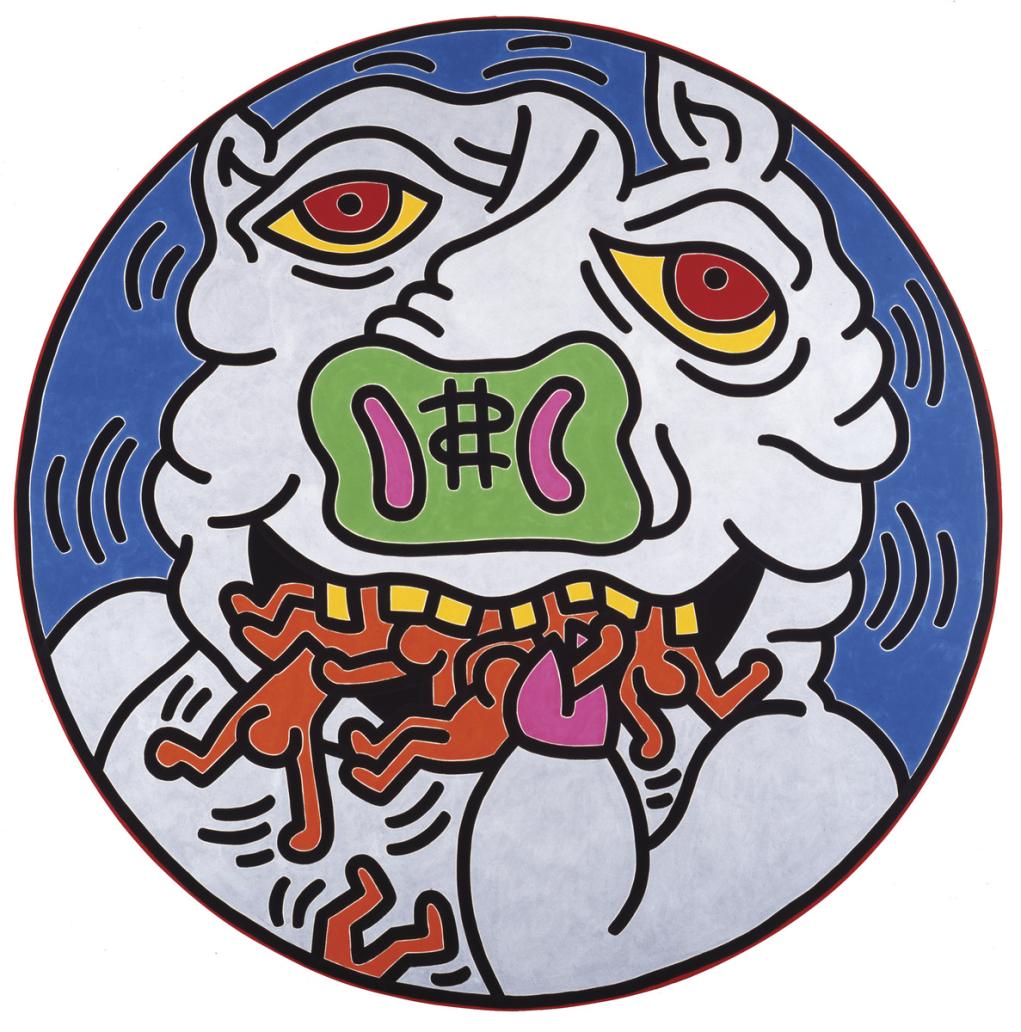
Keith Haring, Untitled, 1988, Acrylic on canvas, 304.8 cm diameter. Courtesy The Keith Haring Foundation. © Keith Haring Foundation.
Long before Uniqlo and other retailers sold Haring merchandise, he did it first with his very own Pop Shop. An extension of his subway works, Haring wanted a way to keep his art accessible to the public after his career took off following his first major exhibition at the Tony Shafrazi Gallery in 1982. With his rising fame in the art world, his work began to sell at high prices in art markets while his subway drawings were sometimes taken by passersby and resold. In the face of all this, Haring wanted an affordable way to make sure that not only the elite could access his art.
In his own words: “I wanted to continue the same communication as with the subway drawings. I wanted to attract the same wide range of people, and I wanted it to be a place where yes, not only collectors could come, but also kids from the Bronx.”
In 1986, four years after his first major exhibition, Haring opened his first Pop Shop in Manhattan, New York. He sold an array of merchandise including T-shirts, buttons, inflatable babies, radios, and even condom cases. Various memorabilia from the Pop Shop are on view in the exhibition at the AGO. The NYC Pop Shop remained open until 2005, 25 years after he passed. Haring had painted a black and white mural all over the walls and the ceiling of the Pop Shop, and a piece of the ceiling remains preserved by the New York Historical Society, right above the museum’s admission desk.
In 1987, Haring opened a second Pop Shop in Tokyo, Japan which closed a year later.
4. Activism is core to Haring's work
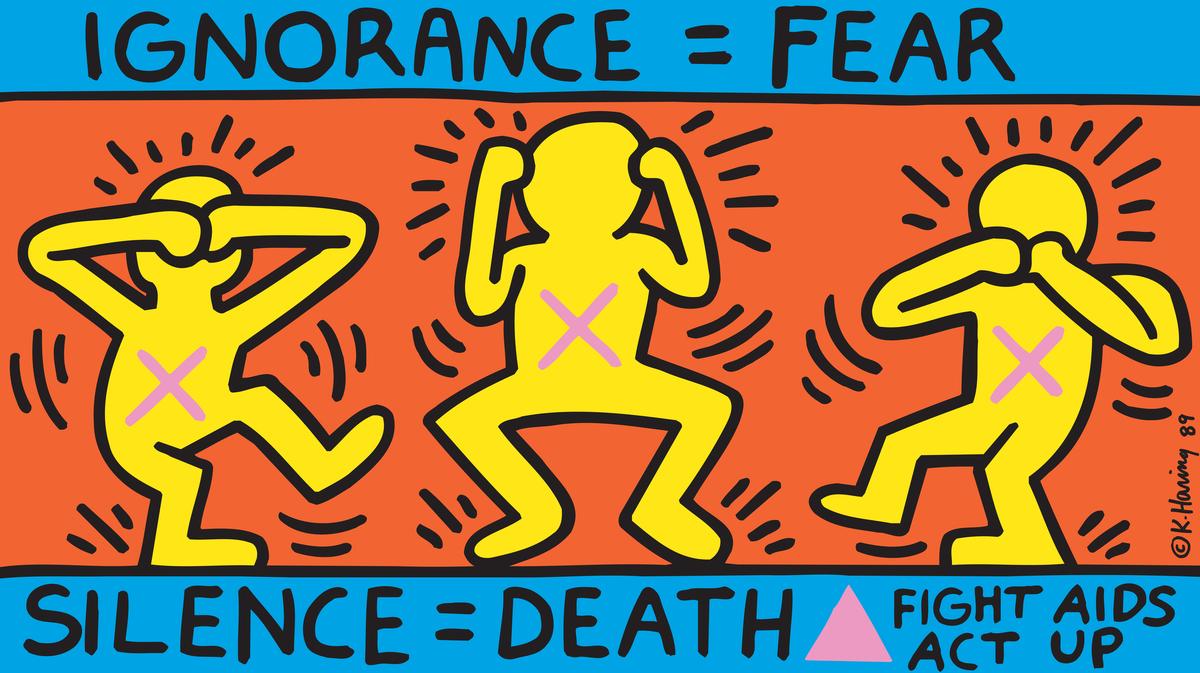
Keith Haring, Ignorance=Fear, Silence=Death, 1989. ACT UP poster, 61 × 109.2 cm. The Keith Haring Foundation © Keith Haring Foundation
The Pop Shop is also reflective of Haring’s anti-capitalist views. He created multiple works that incorporated the stereotype of the “capitalist pig” (seen above) to criticize greed, abuse of power for profit, and overconsumption. Many of his works criticizing capitalism were created during US President Ronald Regan’s Reganomics - a set of trickle-down economic policies that highly favoured the wealthy. Haring’s take on the capitalist pig is in conversation with Pop Shop memorabilia in Room 5 of the exhibition.
Haring’s activism was ongoing and wide-ranging. His works were also critical of nuclear war, the apartheid in South Africa, white supremacy, and the AIDS crisis. In addition, Haring’s sexuality was integral to his art — he once called it the driving force behind his work. As he began to embrace and explore his homosexuality after moving to New York, many of his works reflected this including erect penises and figures having anal sex.
The last section of Keith Haring: Art is for Everybody is dedicated to activist works Haring created during the AIDS crisis, some just months before his passing, such as Unfinished Painting (1989). Using his works and status to bring awareness to the issue, Haring collaborated with various organizations such as AIDS Coalition to Unleash Power (ACT UP) to promote safe sex, provide support to those affected by the disease, and share information about the spread of HIV. You can see various posters Haring created in collaboration with ACT UP, including Ignorance=Fear, Silence=Death (1989) as you enter the exhibition retail space through Room 8.
Haring passed from complications with AIDS in 1990 at the age of 31. Before his passing, he created the Keith Haring Foundation to continue his charitable work for children and AIDS-related organizations. Proceeds from sales of Haring merchandise go towards supporting the work of the Foundation.
5. Haring had many famous friendships
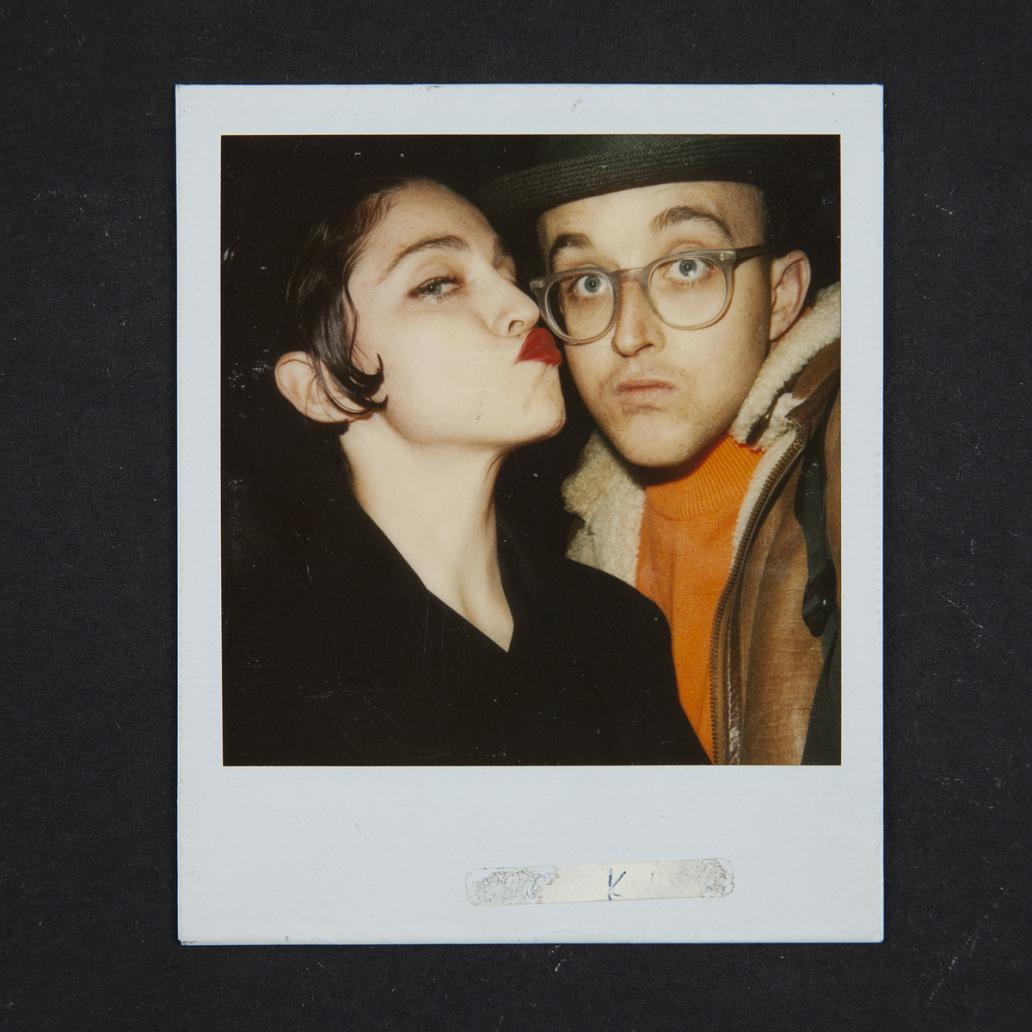
Keith Haring, Keith Haring and Madonna, "Speed the Plow" Production, November 28, 1989. polaroid - facsimile © Keith Haring Foundation
Community was also core to Haring’s work and time in New York City. He kept a close circle of fellow artists, musicians, dancers, and poets, and formed many connections in the New York nightclub scene. Some of Haring’s famous friendships included Jean-Michel Basquiat, Andy Warhol, Grace Jones, and Madonna. Madonna even previewed her infamous song Like a Virgin, at one of Haring’s “Party of Life” birthday celebrations.
3-Piece Leather Suit (1983), a pink leather suit Haring painted with LA II (Angel Ortiz) for Madonna, as well as Snake Totem (1984), a headpiece Haring created with jewelry designer David Spada for Grace Jones, are on view in the exhibition in Room 6.
Take a walk-through Haring’s impactful career in Keith Haring: Art is for Everybody, on view at the AGO until March 17, 2024. For entry to the Keith Haring: Art is for Everybody exhibition, purchase an AGO Membership or Annual Pass. Visit the AGO website for more details on how you can see the exhibition.
Keith Haring: Art is for Everybody is organized by The Broad, Los Angeles and curated by Sarah Loyer, Curator and Exhibitions Manager, The Broad. The AGO's presentation is curated by Georgiana Uhlyarik, AGO's Fredrik S. Eaton Curator of Canadian Art.
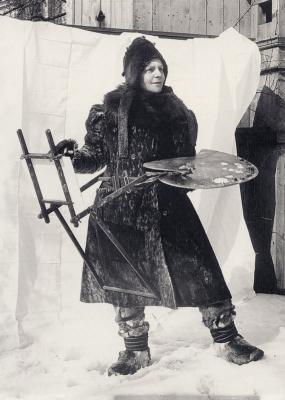
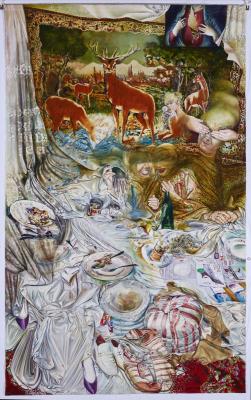
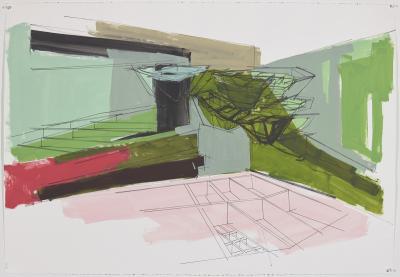

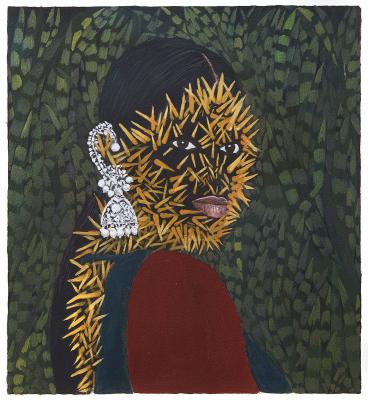

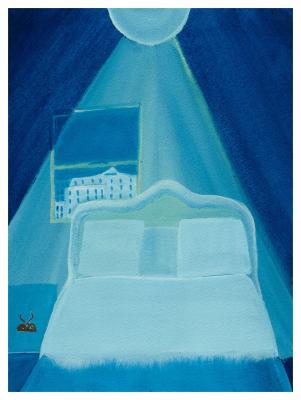
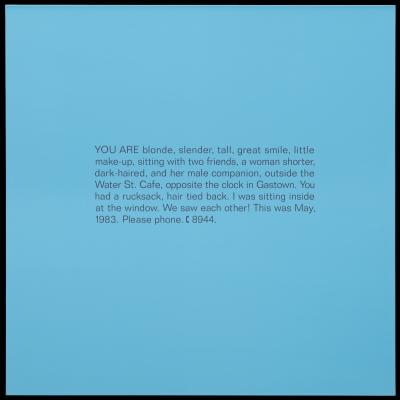
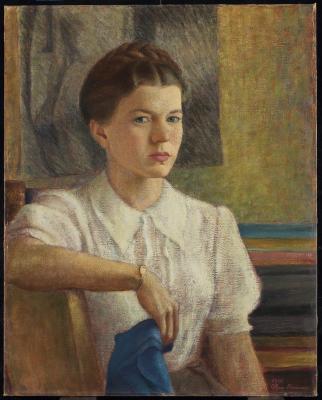
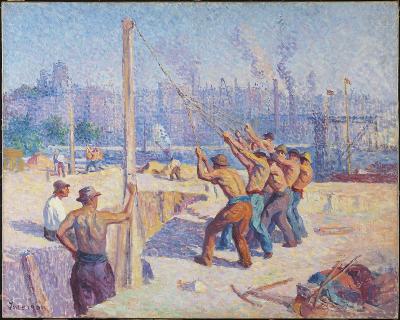
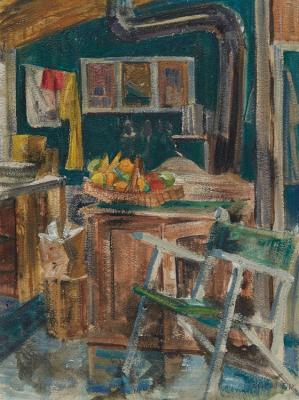
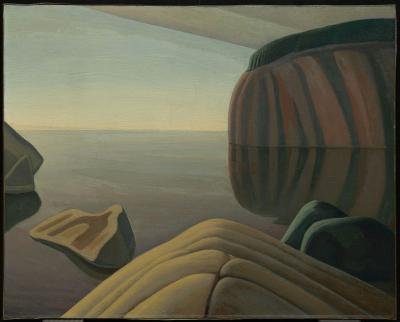
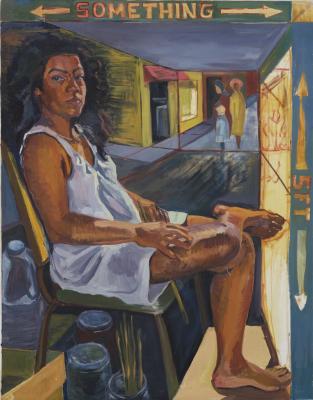
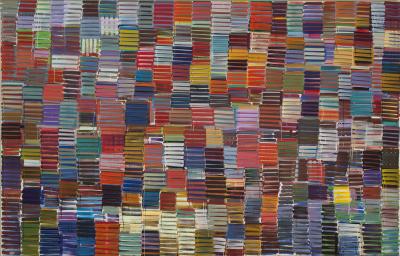

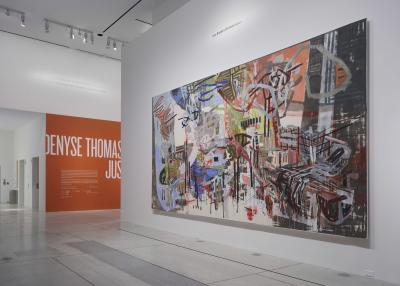
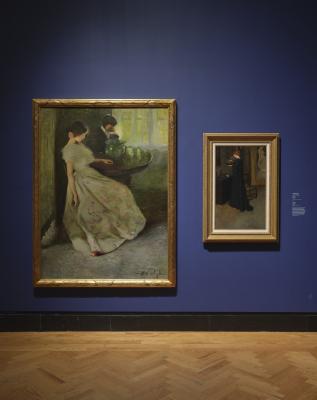
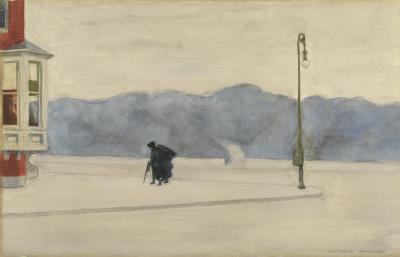
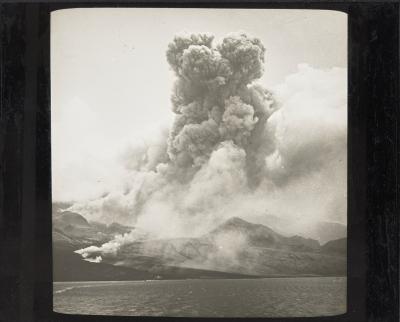
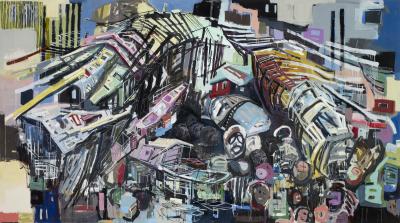
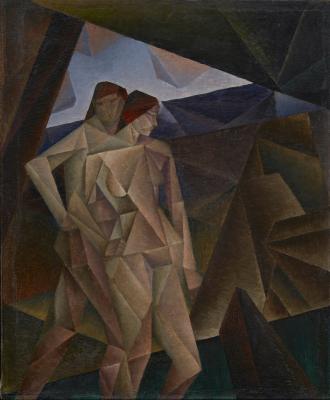
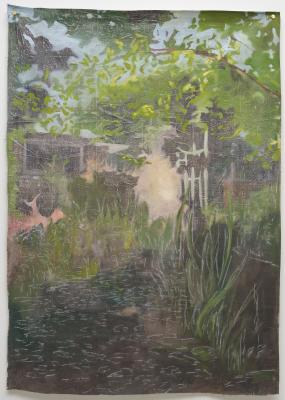
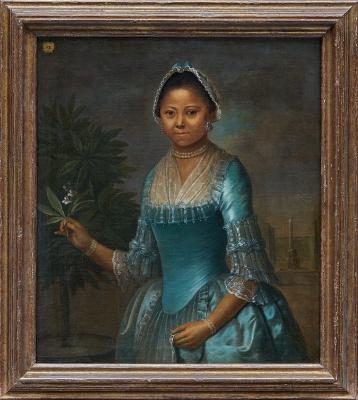

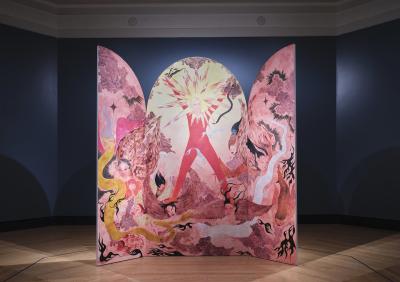
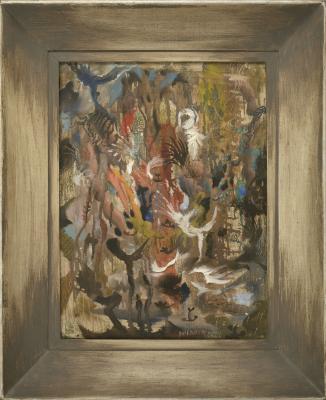
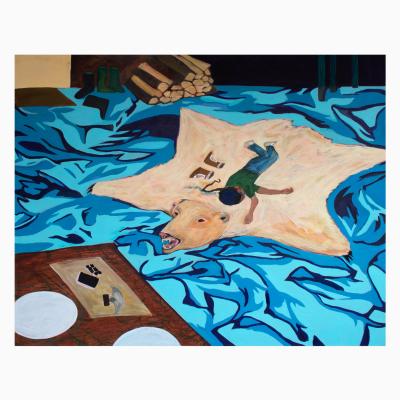
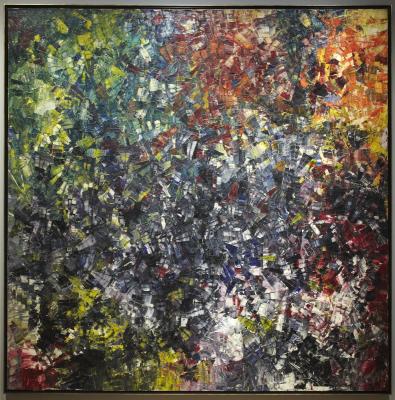
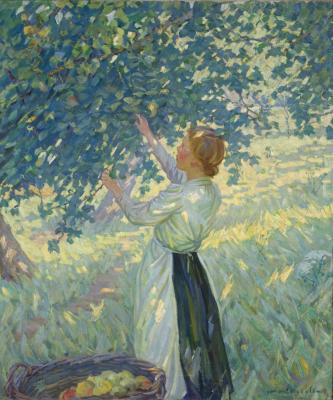
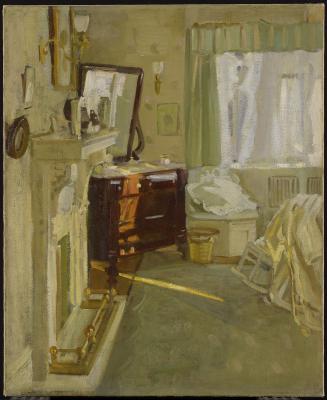
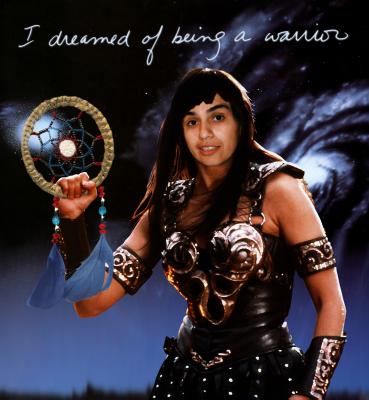
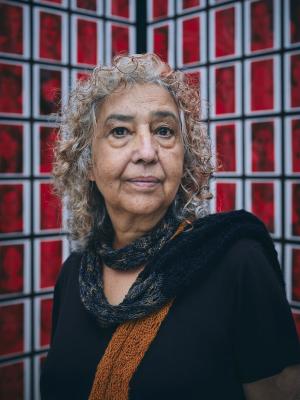
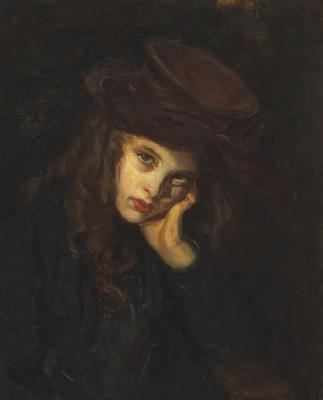
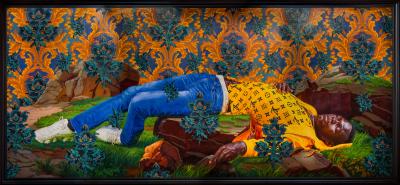

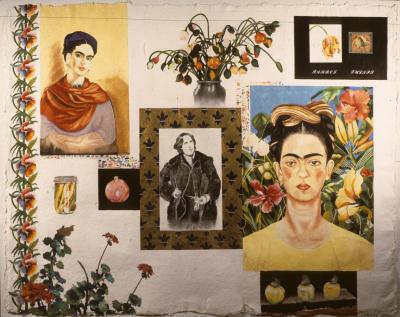
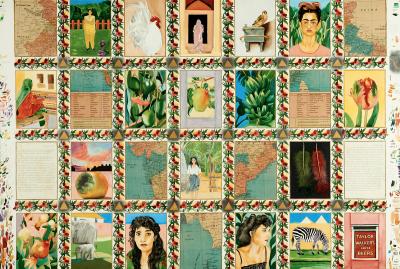
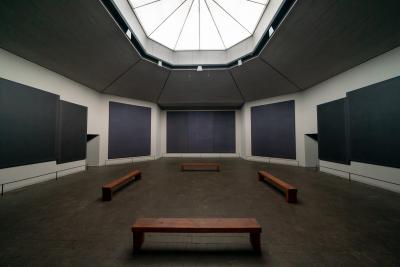
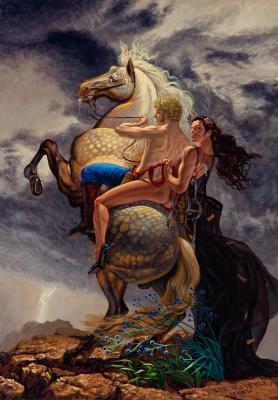
![Keith Haring in a Top Hat [Self-Portrait], (1989)](/sites/default/files/styles/image_small/public/2023-11/KHA-1626_representation_19435_original-Web%20and%20Standard%20PowerPoint.jpg?itok=MJgd2FZP)
